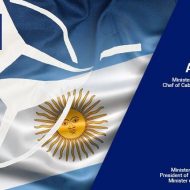British Prime Minister Theresa May presented an alternative action plan (plan B) for secession from the EU after deputies rejected the previous agreement with Brussels with a vote scheduled for the 29th of January. Brexit is scheduled to begin the 29th of March. What are the main point of the new Brexit Plan and what does the future hold for EU-UK relations?
B is for Brexit
The new Brexit plan seems to be a kind of‘ copy-paste’ of the previous version with small modifications that don’t change the essence of the strategy: May continues to push compromise between no-deal Brexit and hard Brexit. May categorically rejects the possibility of another referendum on leaving the EU. In fact, the Prime Minister introduced a second discussion on Plan A. The most significant and it seems only big change in Plan B was the abolition of the £ 65 fee which EU citizens had to pay in order to retain the right to reside in Britain.
Millions of EU citizens who have lived in the UK for years and plan on staying had to apply for so-called “permanent status” and pay the £ 65 fee. May said that EU citizens concerns forced her to reconsider the decision, and eventually cancel it.
May added that everyone who submitted or applied for the pilot phase would be reimbursed.
She also said that she would hold talks with deputies of the British Parliament to understand their demands regarding the border with Ireland.
“Everyone agrees that when leaving the EU we must fully comply with the Belfast Agreement and prevent the emergence of a rigid border between Ireland and Northern Ireland … I say quite clearly: this government will not open negotiations.”
Regarding the problem of the border between Northern Ireland and Ireland, May noted that she would hold talks with deputies on this issue.
Deputies modify the Brexit deal
Among the suggested edits from deputies are:
- banning the government from leaving the EU without Brussels agreement
- extending the negotiation period with the EU on Brexit for another six months
- reducing the time frame until the end of February
- giving Britain the right to conclude a comprehensive free trade agreement with the EU
- the right of Britain to independently withdraw from the agreement on the “soft” border of Ireland and Northern Ireland
There are 2 different groups of deputies opposing May’s proposal: 1) The Labour party who prefer to have a smooth deal Brexit in order to maintain trade relations with the EU 2) the conservatives who are for a no-deal Brexit.
What’s next?
The leader of the Labour Party of Britain, Jeremy Corbyn, still insists on the resignation of Theresa May. He proposes she leave office in the event that the plan for Brexit fails again in the House of Commons on January 29. Members of the conservative party criticize May for her compromises with the EU.
Meanwhile, former UKIP leader Nigel Farage declared that he is going to re-enter politics and launched a new movement ‘the Brexit party’ : “If the government goes back on its word and betrays the millions of people who voted for Brexit then we need a party prepared to stand up and fight for it. I’m fully prepared for article 50 to be extended or revoked and if that happens, I will re-enter the fray.”









Leave a Reply